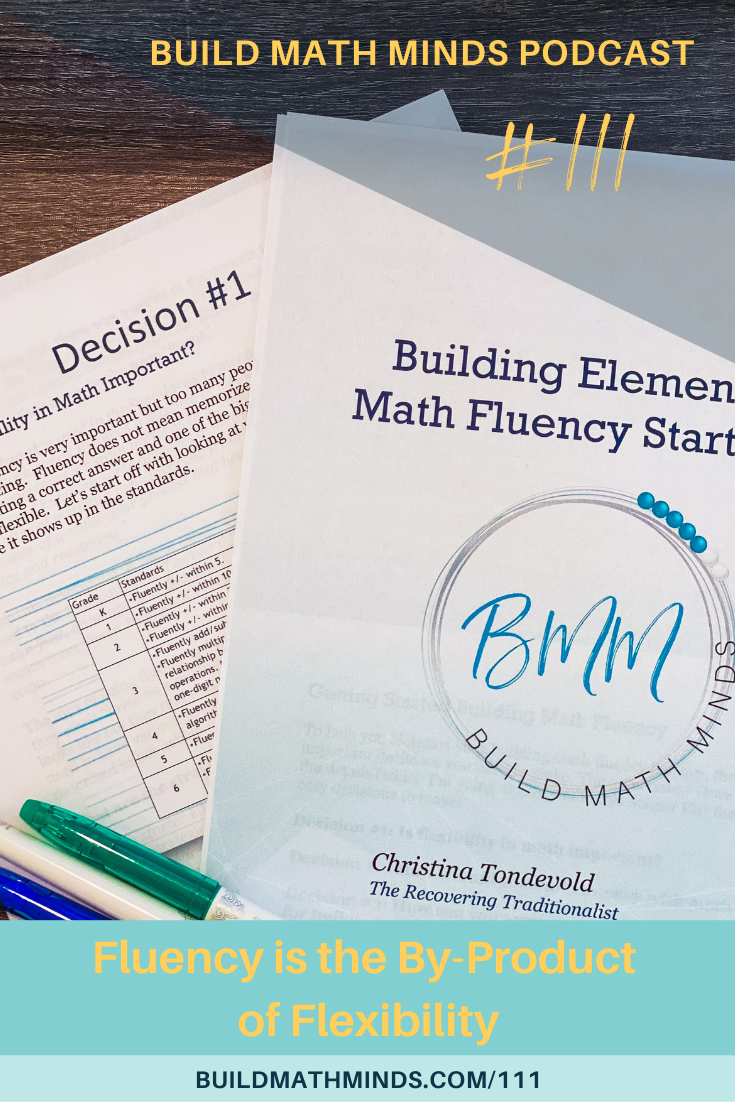Resources mentioned in this episode:
Get the Building Elementary Math Fluency Starter Kit
The Flexibility Formula courses (if registration is not open, you can join the waitlist)
Welcome fellow Recovering Traditionalists to Episode 111. Today we are going to look at how Fluency is the By-Product of Flexibility.
Typically on this podcast I share things that other people have written because I want to encourage you to go learn from the original sources that I have learned from. But today I want to share something I wrote with you.
Fluency is a big focus of mine, so much so that I have full online PD courses that I’ve created for teachers to learn how we build students’ fluency. How we build it is actually through building students’ flexibility…that’s why I called my courses The Flexibility Formula.
To help elementary educators get started down the journey of building fluency by focusing on building students’ flexibility, I created the Building Elementary Math Fluency Starter Kit. I’d like to share a little bit from that starter kit with you today. If you’d like to get the starter kit go to BuildMathMinds.com/starterkit.
On pages 5- 6, I write:
“To be truly fluent (fast, accurate, and flexible) kids need to be operating in the Derived Fact and Fact stages. If we focus on helping kids memorize and drill them on their facts, they don’t develop flexibility.
However, when we focus on helping kids build their flexibility, the by-product is that they become fast and accurate while also building their flexibility. The power isn’t just in helping kids become fluent with their facts, but the real power is that when they build their flexibility with these small quantities it transfers to all kinds of quantities. As kids start working with problems like 399 + 456, they don’t just know that problem as a fact and we also don’t want them solving the problem with a counting strategy. Instead we want them using derived fact strategies.
We will look at the strategies for addition and multiplication with single digits in Part 2 of this kit, but for now I want to look at the addition strategies using multi-digit numbers and then show you how one of those strategies progresses from single-digit operations into operating with fractions.”
One of the most important reasons we want to help kids build their flexibility with numbers while we help build their fluency is that their flexibility transfers to all the numbers they will encounter. How a kid thinks about 9 + 7 will impact how they approach 29 + 37, 579 + 647 and even into decimals and fractions.
If you’d like to see how it does and ways to help build your students’ flexibility, go get the Building Elementary Math Fluency Starter Kit at BuildMathMinds.com/starterkit.
Subscribe and Review in iTunes
Hey, are you subscribed to the Build Math Minds Podcast, yet? If you’re not, make sure to do that today because I don’t want you to miss any episodes! Click here to subscribe to the podcast in iTunes.
While you’re there, don’t forget to leave a review on iTunes too. I would love to know your thoughts and how we can make sure that we give you content that you will really enjoy.
To leave a review, head over to iTunes and click on “Ratings and Reviews” and “Write a Review.” I can’t wait to hear your thoughts about the podcast.




